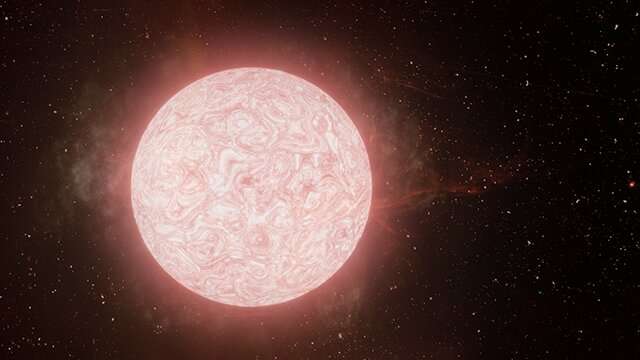For the very first time, astronomers have imaged in real time the dramatic end to a red supergiant's life, watching the massive star's rapid self-destruction and final death throes before it collapsed into a Type II supernova.
Using two Hawaiʻi telescopes—the University of Hawaiʻi Institute for Astronomy Pan-STARRS on Haleakalā, Maui and W. M. Keck Observatory on Maunakea, Hawaiʻi Island—a team of researchers conducting the Young Supernova Experiment (YSE) transient survey observed the red supergiant during its last 130 days leading up to its deadly detonation.
Source
Using two Hawaiʻi telescopes—the University of Hawaiʻi Institute for Astronomy Pan-STARRS on Haleakalā, Maui and W. M. Keck Observatory on Maunakea, Hawaiʻi Island—a team of researchers conducting the Young Supernova Experiment (YSE) transient survey observed the red supergiant during its last 130 days leading up to its deadly detonation.
Source






















